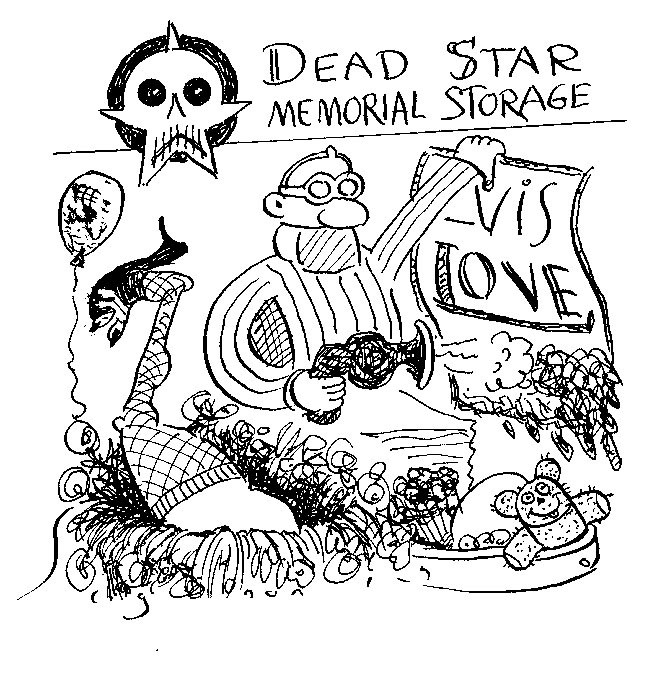
In the wake of Prince's death, I've read a lot of magazine special editions dedicated to him, and each contains pictures of hundreds of gifts left at his home by fans as memorials. Something like this seems to happen whenever a major celebrity dies. What happens to these items? Does the family take the stuff? Do other fans eventually take it? Does the city? Or is there possibly some foundation that deals with such things?
—Trina High
Any parent of an all-too-prolifically creative child can sympathize with the dilemma facing the custodians of a celebrity memorial site. Think of when an offspring's lovingly finger-painted or magic-markered artworks have papered the entirety of the refrigerator and threaten to consume all available wall space in the house. Then even the most doting patron has to make a decision: store these masterpieces lovingly away, or surreptitiously trash them and hope the artist never asks where they went.
In the case of Prince, who died April 21, that's pretty much the task that fell to Bremer Trust, a Minnesota-based bank that's been appointed temporary administrator of the superstar's estate while the court determines his rightful heirs. As you note, fans had decorated the chain-link fence surrounding Paisley Park, Prince's home and studio outside Minneapolis, with flowers, balloons, and all sorts of homemade tributes. These clearly couldn't stay up forever.
Rather than throw the stuff out, though, the bank's representatives undertook a fairly heroic preservation process, and like the industrious midwesterners they are, they did so quickly. Just one month after Prince's death, multiple curators from four local history societies, working as volunteers under the supervision of a Bremer archivist, gathered up the accumulated items. The dead flowers and rotten food got tossed, but everything else was documented and archived according to standard museum procedures. The most sun-bleached and rain-soaked poster boards, their valedictory messages however illegibly smeared or faded, have been stored away in an environmentally controlled space, possibly for future public exhibition.
That's not always how it happens. If, for instance, you've crafted a special item to commemorate the life of John Lennon that you'd like preserved for posterity, don't leave it behind at Strawberry Fields. That site, located in New York City's Central Park and dedicated to the late Beatle, considers items left behind at the end of the day abandoned property and disposes of them accordingly. Imagine no possessions and all that, I suppose.
There is a middle ground, of course, between storing every item as a treasure and binning it all as trash. Elvis Presley's Graceland, in Memphis, Tennessee, is the granddaddy of all celebrity shrines, attracting 500,000 visitors per year—many of whom leave some token of admiration behind. Though Graceland didn't open as a tourist attraction until 1982, fans were using the site to communicate with Elvis while he was still living: Cut off from their increasingly isolated idol, they started scrawling messages to him on the wall surrounding his mansion. Groundskeepers scrubbed the graffiti away for years, but after the King's death in 1977 the task grew too great, and now they only zap the off-color material.
Graffiti, though, doesn't create storage issues. The objects left behind at Elvis's grave are another story. The Graceland archivists are world-renowned—in fact the Paisley Park team adopted some of their techniques from those used by the Presley preservationists. But unlike the Paisley Park curators, the caretakers at Graceland are highly selective about what they keep—only creations deemed of particular artistic merit or ingenuity get stored away in the archives.
Interestingly, one institution that served as an example for those diligent Minnesotans doesn't honor celebrities at all. The Vietnam Veterans Memorial in Washington, D.C. was dedicated the same year that Graceland was opened to the public. And as with Graceland, visitors to the memorial, colloquially known as "the Wall," started leaving items behind immediately: The National Park Service estimates that 400,000 items have been left as remembrances and tributes—one group from Wisconsin even left a motorcycle.
Currently these tributes—every last nonperishable one of them—go into the Vietnam Veterans Memorial collection, which is warehoused in a Maryland facility. Looking ahead, however, the Park Service admits there won't always be room for everything, and it's planned to limit the scope of the collection to items directly related to the Vietnam War.
Someday, whoever inherits Bremer Trust's responsibility for Paisley Park's upkeep may have to make similar decisions, particularly if the site becomes a Graceland-style museum that attracts hundreds of thousands of tourists bearing gifts. Right now, though, Bremer faces more pressing concerns. Since Prince died intestate, the administrator expects that the IRS and the state of Minnesota may gobble up more than half his estate's value next year. Should some future reader ever wonder "Why should I leave a will?" I may simply direct them to the messy story of Prince's probate woes, which is just beginning.
Send questions to Cecil via StraightDope.com or write him c/o Chicago Reader, 350 N. Orleans, Chicago 60654.